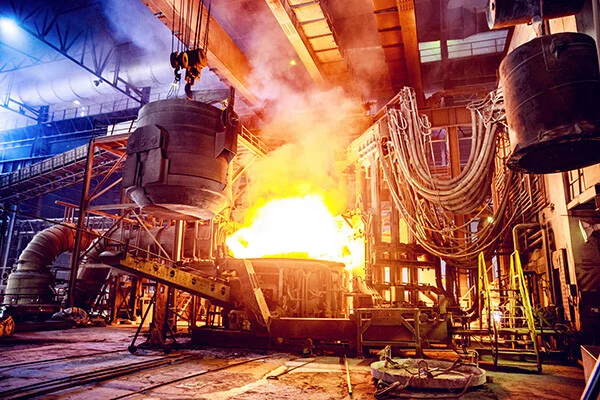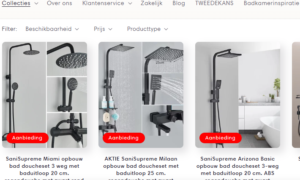Steel remains one of the most important materials in modern manufacturing. From construction to automotive industries, steel processing methods continue to evolve. Let me walk you through the ten most popular steel processing techniques being used this year.
1. Hot Rolling
Hot rolling is still a favorite method for processing steel in 2025. This technique involves heating steel above its recrystallization temperature, usually around 1700°F. The heated steel passes through rollers that shape it into desired forms like sheets, bars, or structural beams.
Manufacturers love hot rolling because it’s cost-effective for large production runs. The process makes steel easier to work with and creates products with excellent structural properties. You’ll find hot-rolled steel in railroad tracks, I-beams, and automotive frames.
2. Cold Rolling
Unlike its hot counterpart, cold rolling works with steel at room temperature. This method produces steel with tighter tolerances and smoother surfaces. Many fabricators prefer cold-rolled steel when precision matters most.
The process involves passing steel through rollers multiple times to achieve the desired thickness and finish. Cold-rolled steel costs more than hot-rolled, but the superior surface quality makes it worth the investment for applications requiring sheet metal bending operations.
3. Forging
Forging has been around for centuries, but modern techniques make it incredibly efficient. This method uses compressive forces to shape heated steel. Drop forging, press forging, and roll forging are common variations used today.
Forged steel components show exceptional strength because the process aligns the metal’s grain structure. You’ll find forged steel in aircraft landing gear, crankshafts, and heavy machinery components. The automotive industry relies heavily on forging for critical safety parts.
4. Casting
Steel casting involves pouring molten steel into molds. Once cooled, the steel takes the shape of the mold cavity. This method works great for creating complex shapes that would be difficult or impossible to achieve through other processes.
Sand casting, investment casting, and die casting are popular variants. Manufacturers use casting for everything from decorative railings to industrial machinery parts. The flexibility of casting makes it irreplaceable in modern steel processing.
5. Machining
Machining removes material from steel workpieces to create precise dimensions and features. Modern facilities use CNC machines that follow computer programs to ensure accuracy. A horizontal machining center offers significant advantages for processing large steel components efficiently.
Drilling, milling, turning, and grinding fall under the machining umbrella. These processes create threaded holes, flat surfaces, cylindrical parts, and smooth finishes. The horizontal machining center configuration allows gravity to help remove chips, keeping the work area cleaner during production.
6. Welding
Welding joins steel pieces by melting and fusing them together. Several welding methods exist, including MIG, TIG, stick welding, and laser welding. Each technique has specific applications depending on the steel type and project requirements.
Modern welders must know how to weld galvanized steel properly since this coated steel is everywhere in construction and manufacturing. When you weld galvanized steel, the zinc coating requires special consideration to avoid toxic fumes and ensure strong joints. Proper ventilation and technique matter greatly when working with galvanized materials.
7. Stamping
Metal stamping uses dies and presses to shape flat steel sheets into three-dimensional parts. This high-speed process creates millions of identical parts with consistent quality. The automotive industry produces most car body panels through stamping operations.
Progressive dies, transfer dies, and compound dies each serve different purposes. Stamping works brilliantly for high-volume production where consistency and speed matter most. The initial tooling cost gets offset by the low per-piece production cost.
8. Bending and Forming
Bending transforms flat steel into angled or curved shapes without cutting or joining. Press brakes and roll forming machines handle most bending operations in modern shops. The techniques used for sheet metal bending have become incredibly sophisticated with computer controls.
Operators can now program complex bend sequences that maintain tight tolerances across entire production runs. Air bending, bottoming, and coining represent the three main bending methods. Each technique offers different advantages regarding tool life, precision, and flexibility. Understanding sheet metal bending fundamentals helps manufacturers choose the right approach for each project.
9. Cutting
Steel cutting has advanced tremendously with technology. Traditional methods like sawing and shearing still have their place, but laser cutting, plasma cutting, and waterjet cutting dominate modern facilities.
Laser cutting offers incredible precision for thin to medium steel thicknesses. Plasma cutting handles thicker materials at faster speeds. Waterjet cutting works without heat, preventing any thermal distortion. Each method has sweet spots where it performs best.
10. Surface Treating
Surface treatment protects steel from corrosion and improves its appearance. Galvanizing, powder coating, painting, and plating are common treatments. Galvanizing involves coating steel with zinc, which explains why knowing how to weld galvanized steel correctly is so important in fabrication shops.
Heat treating also falls into this category. Processes like annealing, tempering, and case hardening modify steel’s mechanical properties. Manufacturers select surface treatments based on the operating environment and expected service life.
Looking Forward
Steel processing methods continue advancing as technology improves. Automation, artificial intelligence, and robotics are making these traditional processes more efficient and precise. However, the fundamental techniques remain largely unchanged because they work so well.
Understanding these ten methods helps anyone working with steel make better decisions. Whether you’re designing parts, managing production, or learning the trade, knowing when to use each process makes all the difference. Each method brings unique advantages to the table, and skilled fabricators know how to combine them for optimal results.
The steel industry isn’t going anywhere. These processing methods will continue serving manufacturers worldwide, with gradual improvements making them even more efficient and environmentally friendly over time.
Read More From Techbullion



































